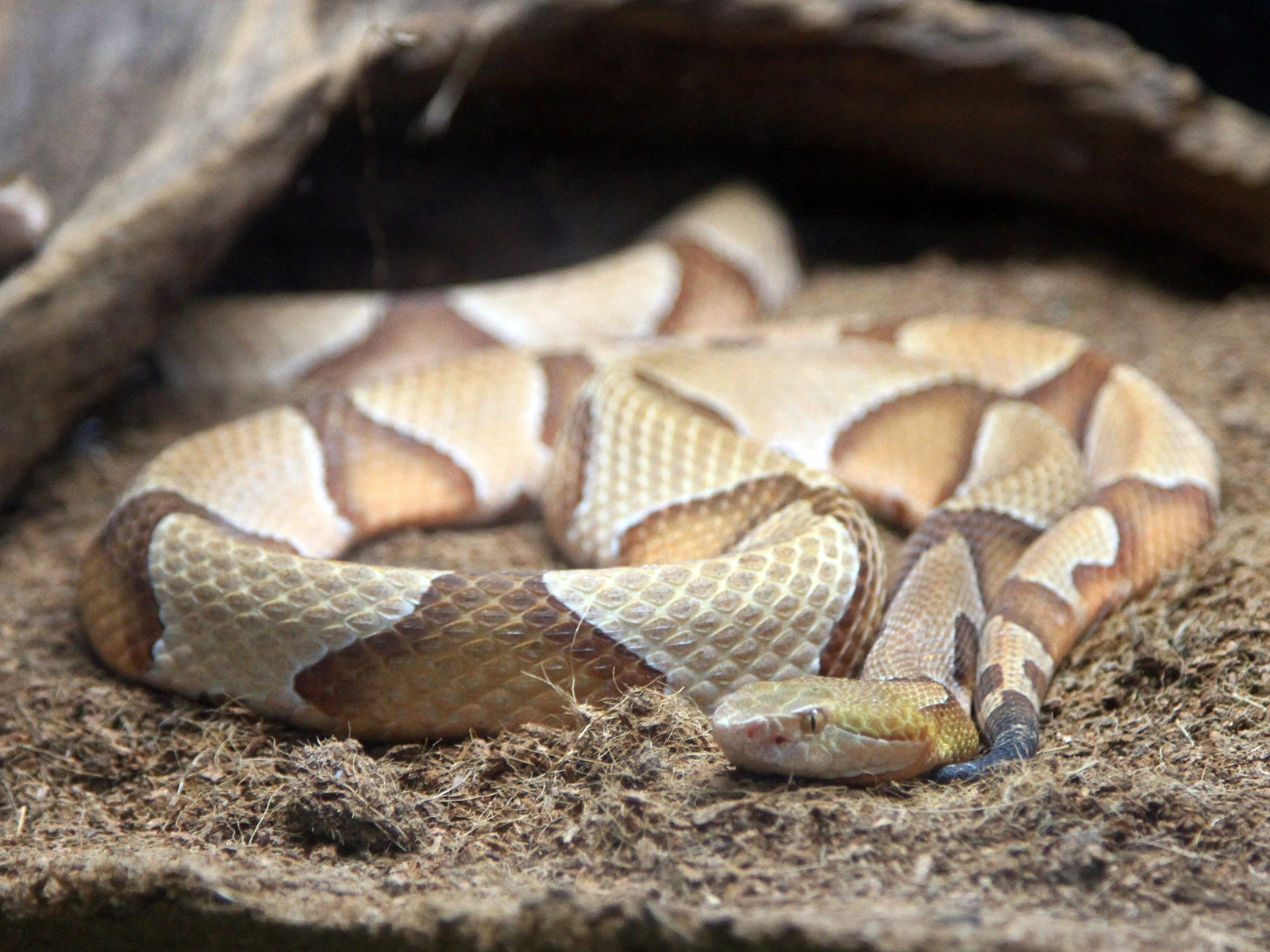Copperhead
Agkistrodon contortrix
Class
Reptilia
Order
Squamata
Family
Viperidae

Reptilia
Squamata
Viperidae
Eastern United States to the central and southern states
Length: Avg. 30 in
Prefer terrestrial to semi-aquatic habitats, which include rocky-forested hillsides and various wetlands
Avg. 2 - 10
Gestation: 3 - 9 months
Mostly mice but also small birds, lizards, small snakes, amphibians, and insects (especially cicadas)
Least Concern
The fangs are replaced periodically, with each snake having a series of five to seven replacement fangs in the gums behind and above the current functional fang.
This venomous snake has heat-sensing "pits" located between the eyes and nostrils. Sometimes when touched, they emit a musk that smells like cucumbers.
These social snakes may hibernate in a communal den with other copperheads or other species of snakes including timber rattlesnakes and black rat snakes.
Newborn copperheads have fully functional fangs that are capable of injecting venom that is just as toxic as adult venom.